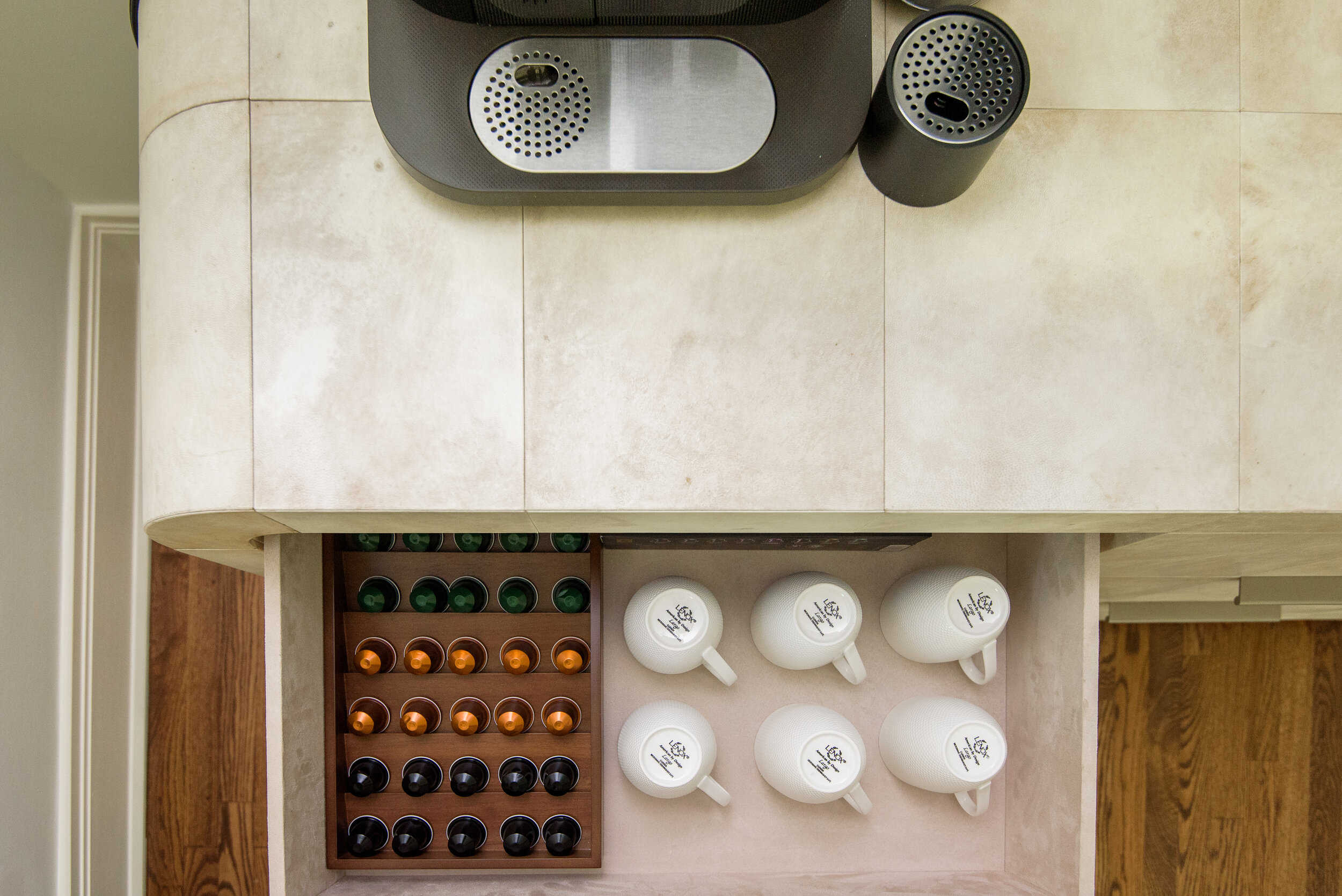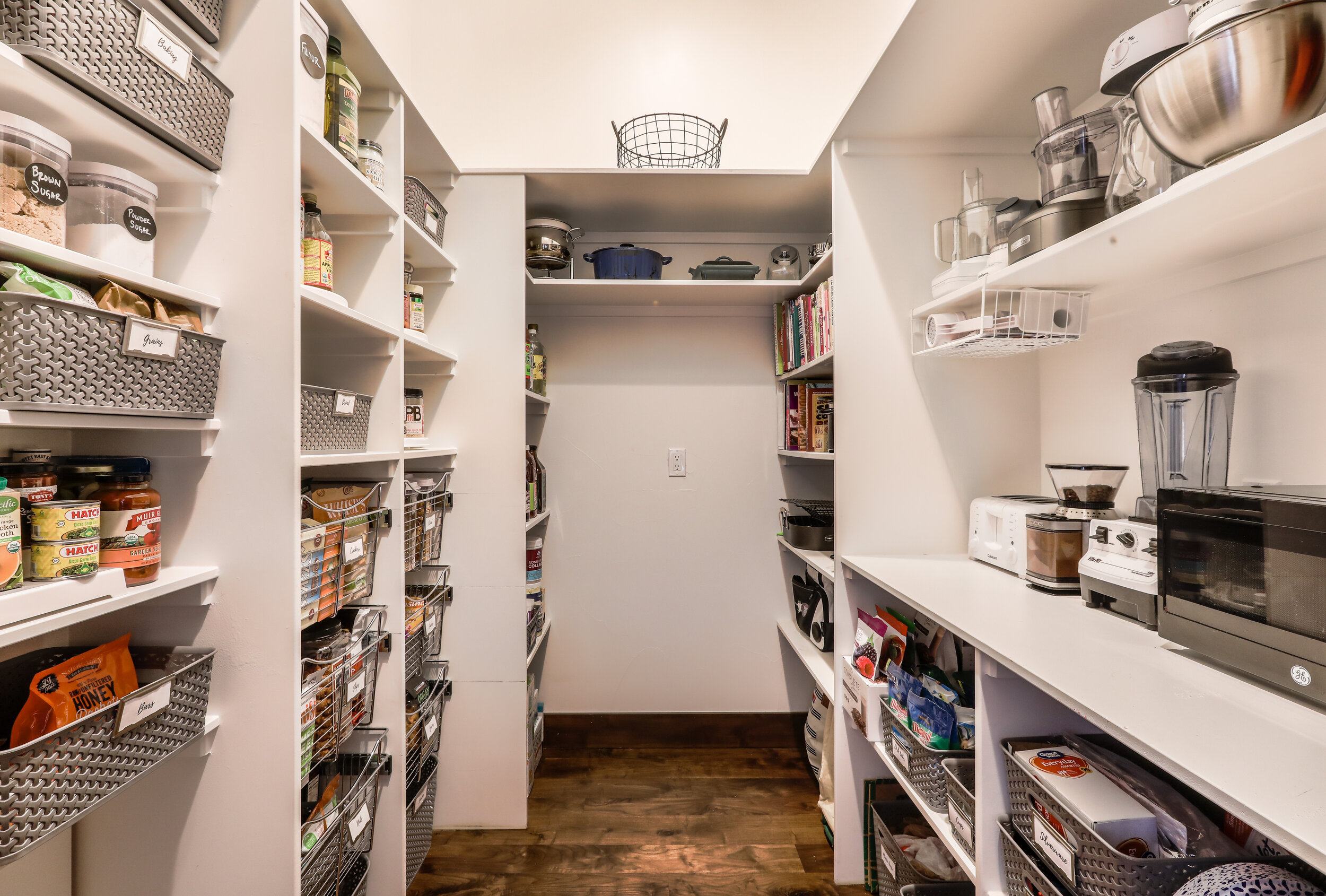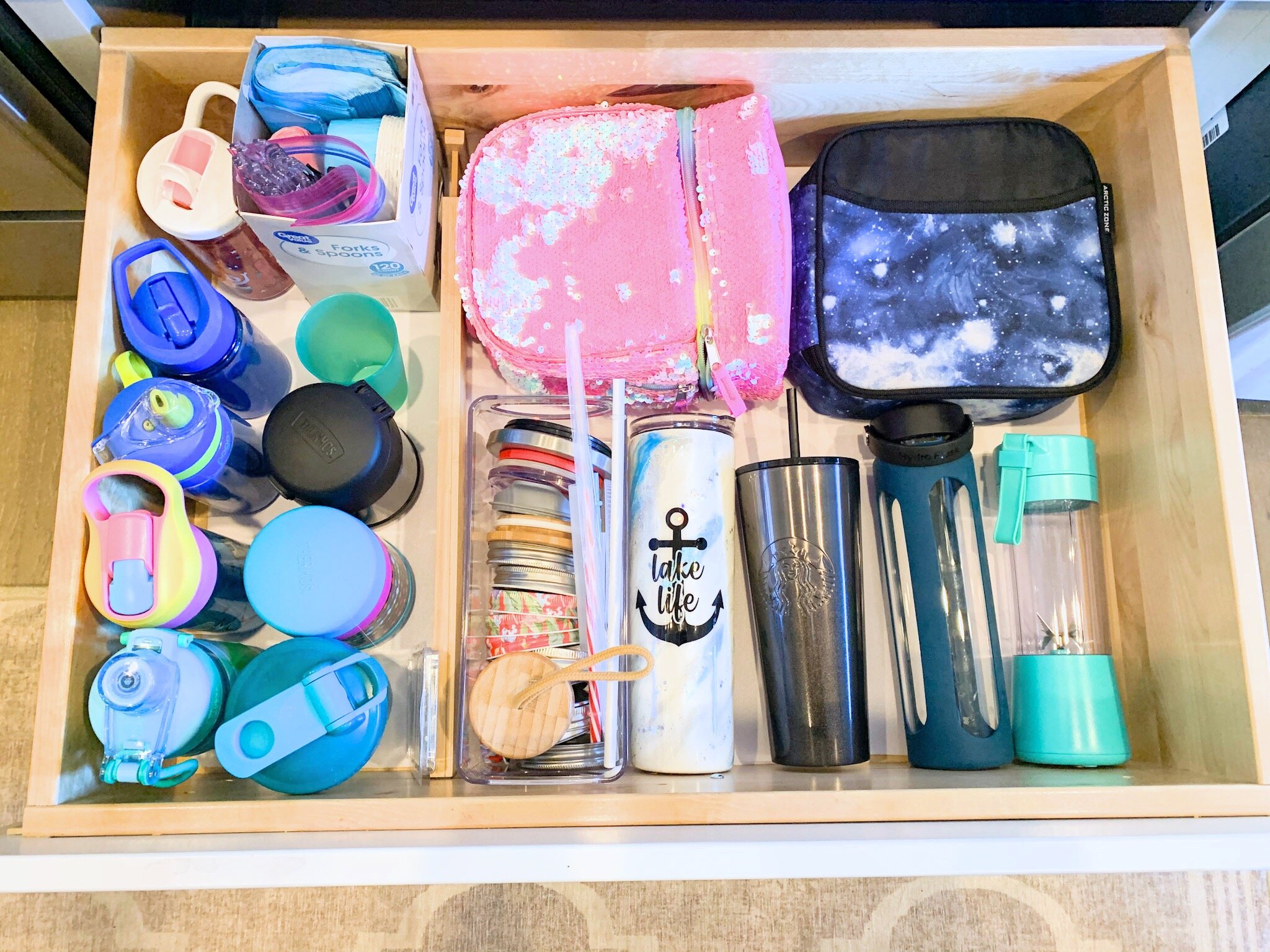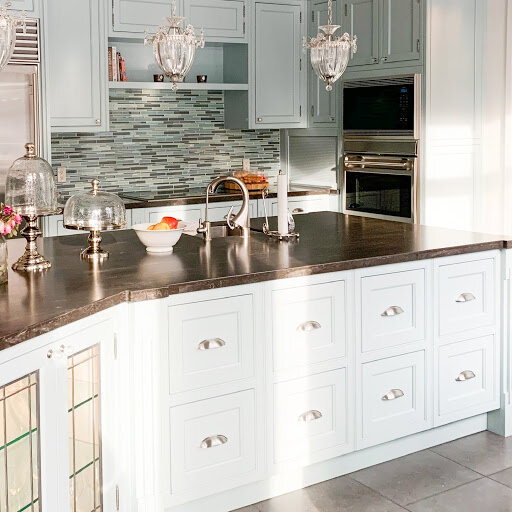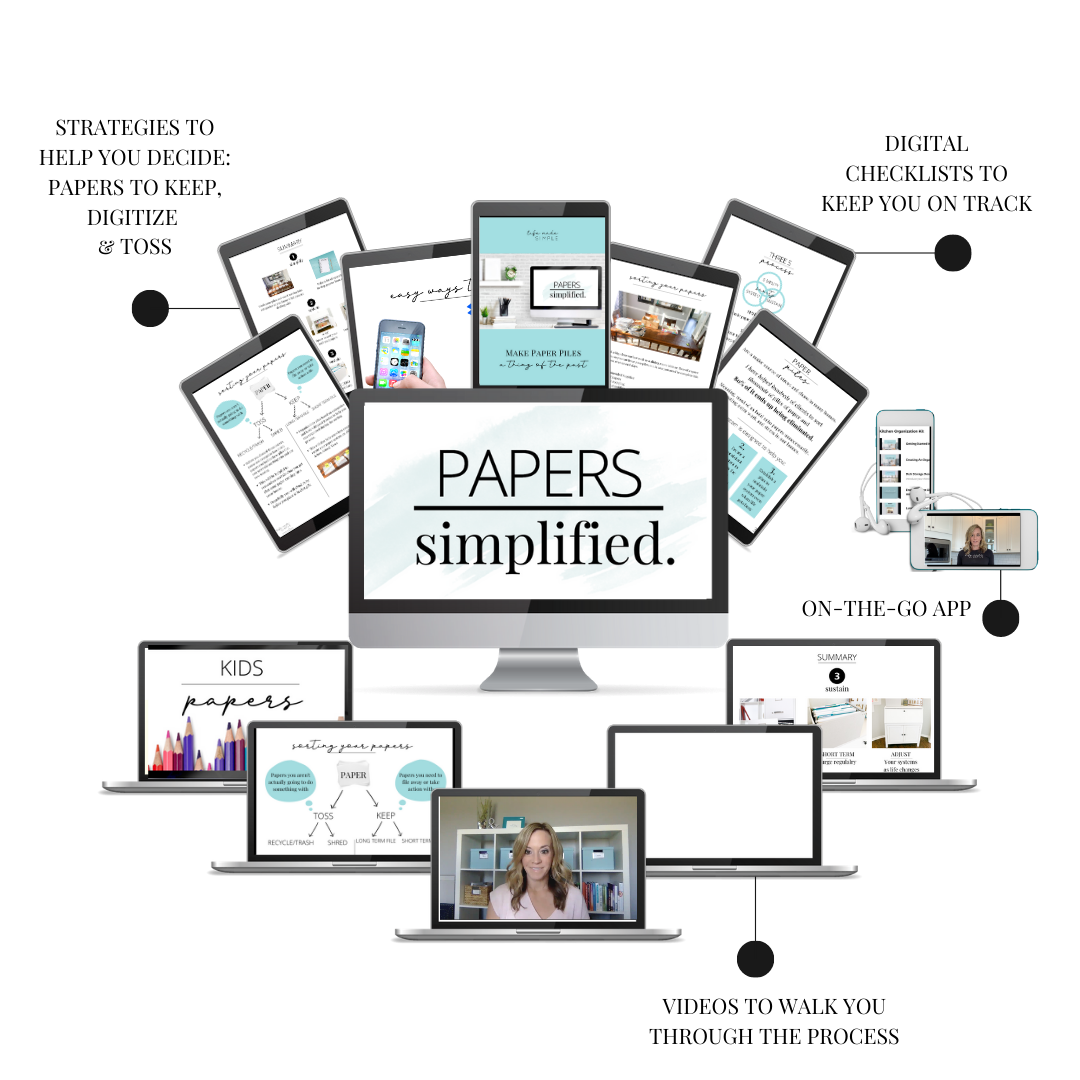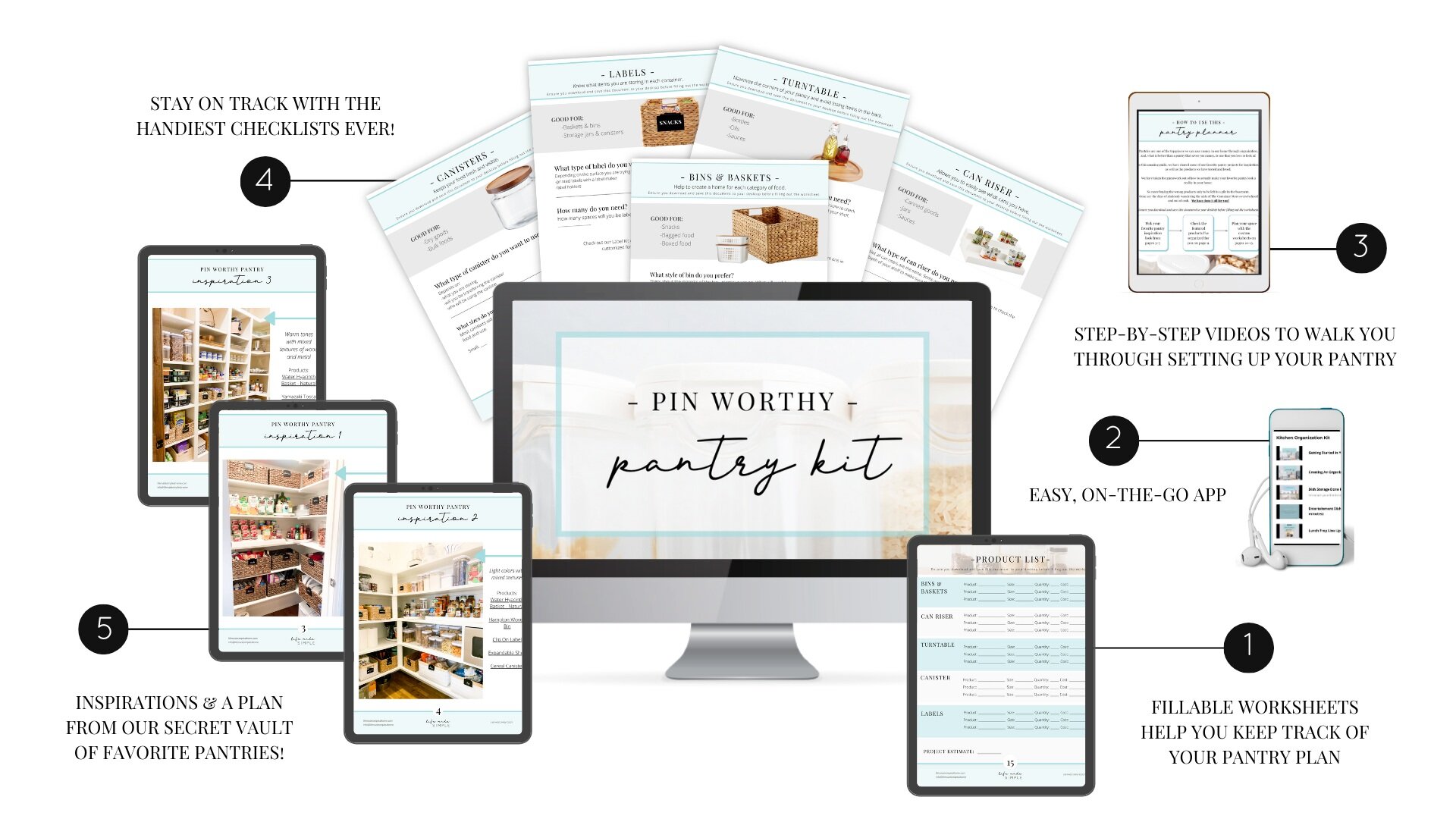The Best Ways To Store Water Bottles & Lunch Boxes, That Don't Seem Like a Random Act of "Organizing."
With the kids heading back to school (so happy about this), and even some adults heading back to the office, lunch prep is returning as part of our daily routines.
We are dusting off our lunch boxes and water bottles to make our to-go lunches again.
Let’s be real, lunch prep can be a morning mad dash without some systems in place!
First, let’s talk Kitchen Zones…
What are kitchen zones?
You may have heard me relate the kitchen to an operating room. My background in healthcare naturally has me making this relation, since it is where I started my organization journey.
Like an operating room, the kitchen has many tasks that happen every day in the same space. Therefore, in creating systems we can make those tasks more efficient and enjoyable. These work areas are called kitchen zones.
All kitchen zones have a primary function based on the tasks done within those spaces. However, not all kitchen zones are created equal. They are based upon the lifestyle you lead and how your family regularly utilizes the kitchen. Most families require what I call the “Lunch Prep/Meal Prep Zone”.
Some clients have a hard time identifying the kitchen zones and how to create systems within their homes and seek extra support through my online tools.
What are the 6 types of kitchen layouts?
There are 6 common kitchen layouts…
One-wall
This style is typically seen in smaller homes, used to save space. Cabinets and appliances are typically on this one wall.
Galley
This style is also a space saver. It is often two walls opposite of each other, or two countertops with a walkway in between them.
L-Shaped
This is characterized by countertops on two adjoining walls that are perpendicular, forming an L.
Horseshoe
Otherwise known as U-Shaped. This style has three walls to an L-Shaped kitchen with an island forming the third “wall.”
Island
Adding an island to a kitchen can change the layout into one of the other mentioned styles above. It provides added space for cooking.
Peninsula
This style includes a connected island, rather than free standing.
For more information on different kitchen layouts, see this article from HGTV.
When working with clients, we see many different kitchen layouts. Regardless of what layout you have, within that layout you can identify and create your kitchen zones.
What are the work areas in the kitchen?
The work areas within a kitchen can be identified as the kitchen zones.
In my kitchen, I have 4 zones.
Cooking Zone
Dishwashing Zone
Lunch/Meal Prep Zone
Coffee Zone
Other zones may include: Entertainment, Smoothie Prep, etc.
For more information on the zones I have created for a more efficient and enjoyable kitchen, check out this blog.
Here is an example of the “Coffee Zone”.
How many zones are found in the average kitchen?
In my experience with clients, I typically see 4-5 kitchen zones.
When identifying how many kitchen zones you have, consider these questions:
…What needs to happen in this space?
…What makes sense to store in this space?
How do I organize my water bottles?
When it comes to organizing your Lunch Prep Zone, identify the space you have to work with and what items need to go in that space.
Ask yourself, “What do I use for lunch prep?”
Lunch box and water bottle organization can make your kitchen more efficient for lunch prep.
Deep Drawers
If you have deep drawers available in your kitchen, these are great for water bottle organization.
In drawers deep enough, you can choose to stand water bottles up or lay them down. I recommend using drawer dividers to help stabilize the bottles, that way they are not falling over or rolling around the drawer. The dividers can also be used to designate a specific part of the drawer for lunch box storage.
Cabinets
Don’t worry if deep kitchen drawers are not an option for you, there are cabinet solutions for lunch box and water bottle organization as well!
For water bottle organization, I like to use a magazine rack or a holder stand where I am able to lay them on their sides and stack them vertically. That way, they are no longer prone to falling over and getting lost in the back of the cabinet!
I like to store lunch boxes in a bin within a cabinet. This gives them a special home so that you are not having to dig for them. I usually stand them up vertically, one in front of the other.
Lid Storage
If you are not able to, or do not like storing water bottles matched with their lids (lids on), I recommend using a small basket or bin to hold all of the water bottle lids.
Storing them without a lid allows for quick put away, straight from the dishwasher. You don’t have to be as concerned about them drying completely. With an open top, it allows them to keep drying as needed without you having to transition them first to a drying rack before putting them away. You also don’t have to spend time matching using this method!
This is one of my favorite water bottle organization tips for a more efficient kitchen!
Kids Station
Lower level drawers are a great water bottle organization solution for your kiddos. Along with water bottles, I also include lunch boxes or anything else needed for kid’s lunches in this drawer.
This allows them easy access so that they are able to grab their own lunch prep tools without your help! They can also easily put their own lunch boxes away when they get home by having access to their own “Lunch Prep Station.”
You can also create a kid’s section in a lower cabinet and utilize bins to help with lunch box and water bottle organization.
Where is the best place to store bottled water?
Whenever possible, I like to use reusable bottles. However, even when we make our best effort to use the reusable bottles, we still end up with some bottled water.
When we do have bottled water, I like to keep it separate from the water bottle organization in my kitchen. My girls love to grab bottled water and take two sips before leaving it and never coming back to finish it….It drives me nuts!
Therefore, I typically store bottled water in the garage fridge for those special situations or emergency needs.
How much money do water bottle companies make a year?
I have no clue! I would imagine a lot based on the water bottle organization I do in my clients kitchens. At least we are all staying hydrated!
How do you organize baby bottles?
While it has been awhile since I have had to organize baby bottles in my own home, I recommend very similar systems to the water bottle organization solutions mentioned earlier.
Depending on the age of your children, you may be in a spot where you have both baby bottles and water bottles. If you are able to make a kids station where the kids old enough are able to grab their own bottles, it will make it easier for you to focus on the baby.
In a kitchen cabinet that is easily accessible for you, you can create a bin for all baby bottles. I would even recommend adding different sized bins within that bin (or near to it) as needed to organize all the pieces required for the baby bottles. This will allow for the efficiency that I mentioned above in regards to lid storage - easy to put away.
No matter how you choose to store water bottles and lunch boxes, it will not seem like a random act of “organizing” if you set up a system around your Lunch Prep Zone.
Make sure that this zone includes absolutely everything you need for lunches, even outside of the water bottles and lunch boxes. You can include napkins, silverware, even snacks if you have the space!
Make it a fun exercise to set up your Lunch Prep Zone!
I promise that you will be able to create a more efficient and enjoyable kitchen once you have organized based on your kitchen zones!
If you need extra help, check out my online tools!


